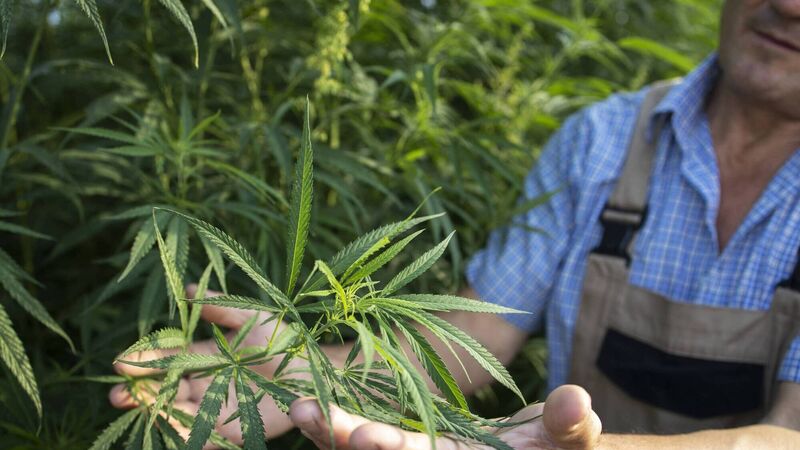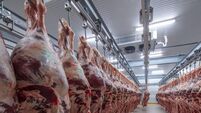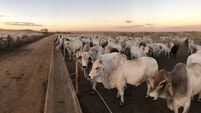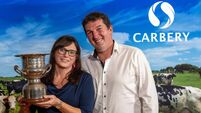Beef prices may have been a factor in hemp hectares peaking in 2019

In 2019, there was a jump to 314 hectares of hemp sown in Ireland from 67 in 2018, compared to 17 hectares in 2015. There was a drop to 164 hectares in 2020.
Low beef prices and an increased interest in crop diversification may have been a factor in a peak in the number of hectares of hemp grown in Ireland in 2019, the Department of Agriculture, Food and the Marine (DAFM) believes.
In 2019, there was a jump to 314 hectares of hemp sown in Ireland from 67 in 2018, compared to 17 hectares in 2015.
There was a drop to 164 hectares in 2020, and subsequently 153 hectares in 2021, according to the Department of Agriculture's Basic Payment Scheme figures.
Speaking at a recent meeting of the Oireachtas joint committee on agriculture, food and the marine, DAFM senior inspector Michael Moloney said the increase in hemp growing in 2019 was "extraordinary".
"We do not normally see that margin of swing. We have no definitive answers on this, but our opinion is that there was great interest in crop diversification. The level of beef prices may have been a factor," Mr Moloney added.
"There was a 3% increase in tillage area last year and we think much of that came from mixed tillage and beef enterprise.
"Farmers were looking at margins and backing tillage as having a better margin than beef."
Mr Moloney said that the department hasn’t engaged with farmers on the drop in hemp sown seen in 2020, as they do not contact farmers to ask why they have dropped a crop and increased the number of hectares sowed with another crop.
Meanwhile, he told the committee that hemp is “not for any one sector”, and be grown on various other enterprises, not just tillage, and is a “relatively easy crop to grow” with low levels of inputs.
“Tillage farmers are always looking for diversification, they look at what can improve their farm incomes and they are keen to look at alternatives,” Mr Moloney said.
"On that basis, they would look at the crop to see if it is feasible for tillage farmers to grow it.
"They have the techniques of growing crops, they have the equipment, and they are ready made to engage.
"They will, however, compare the returns from hemp with spring barley, which is the crop they would most replace.
"At the end of the day, they are going to look at the margin of this crop versus what they are currently doing, be it finishing cattle or raising store cattle or whether they are growing barley or any other crop."
Mr Moloney said that in relation to “claims” being made by representative organisations regarding the carbon sequestration potential of hemp, he said “it is the buzz thing in relation to the climate debate — but we have not seen hard facts, evidence to show that”.
"Yes, it does tick that environmental box but by how much? Is it comparable to grassland or will it sequester more carbon?
"We have not seen the evidence to back up that claim in relation to carbon sequestration," Mr Moloney told the meeting.
Speaking at the same meeting, Teagasc director Frank O’Mara said that while the research in the area of hemp has been “limited”, it has been “reasonably comprehensive” in terms of growing the crop.
"We know how to grow the crop," Mr O'Mara said.
"One can always keep looking at new varieties or new plant protection products but I do not believe there is a huge gap in knowledge there around growing the crop.
"There is a bit of uncertainty around the level of carbon sequestration.
"Some research we have done suggests that is about the same as for grassland."
"It is probably similar for hemp but there are high levels of uncertainty around that."
Mr O'Mara noted that with most of Teagasc's past research focused on the potential use of hemp as a fibre source for paper and energy for example, with the main interest relating to how the crop is grown, more recent relevant research relates to the food and feed characteristics of the crop.
"We are trying to create facilities, the infrastructure, and a support system for entrepreneurs and innovators who could use any food or crop," Mr O'Mara said.
"We have facilities in our research centre in Ashtown dealing with the extraction and processing of foods.
"We have good facilities that could be used by people at a testing or small manufacturing scale for processing grains, seeds, or whatever it might be, purifying them or extracting components from them, and for packaging them.
"There has been very little work with hemp at the facility but the resource is available."
Teagasc plans to investigate the functionality of hemp protein to identify if there are specific market niches to which it is suited.












